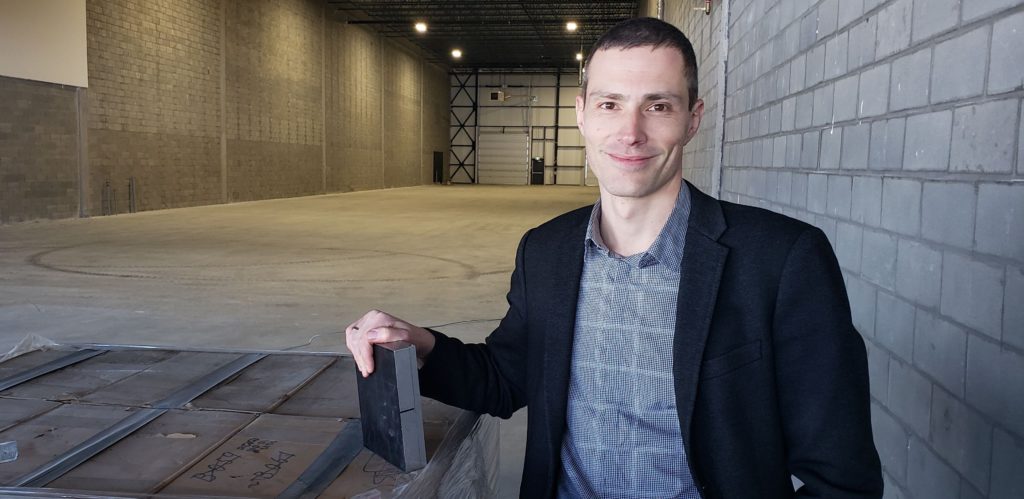Beware of China’s Rare Earth Recycling Dominance — Is It Too Late for North America?
By Kiril Mugerman
Read this editorial written by our CEO Mr. Kiril Mugerman.
Beware of China’s Rare Earth Recycling Dominance – Is It Too Late for North America? – by Kiril Mugerman (June 10, 2020)
Home Kiril Mugerman is President & CEO of GeoMega Resources, a rare earth clean technologies developer for mining and recycling. [email protected] Rare earth elements (REE) are used in many devices that people use every day including mobile phones, catalytic converters, magnets, fluorescent lighting, computer memory, DVDs, rechargeable batteries, and much more.
Rare earth elements (REE) are used in many devices that people use every day including mobile phones, catalytic converters, magnets, fluorescent lighting, computer memory, DVDs, rechargeable batteries, and much more.
China, which produces more than 90% of the world’s REE, plays a dominant role in producing rare-earth elements—one that is forcing users of these metals to look for alternative sources.
REE are not rare as their name might imply and, in fact, have abundancies in the Earth’s crust that range from as high as that of copper, cobalt and lithium and to as low as that of tin.
They are much more abundant than gold, silver and platinum. The challenge in REE is the difficulty of separating them into single elements of high purity due to their chemical similarities, hence the term “rare”.
In 2008 to 2012, as REE prices skyrocketed, many junior mining companies prioritized REE exploration. The problem was that there were no major mining companies looking to buy them. As a mining analyst at the time, it was clear that few people understood the fundamentals of REE mining with most unsuspecting investors unaware of this challenge.
What did China do at this time to take advantage of this shortfall? They reduced domestic mining, increased domestic processing (with special tax incentives built in) and even became the global leader in rare earth recycling. China grew REE recycling as the rest of the world said that prices were too low to bother.
Today, the world is finally starting to understand that REE are not about the mines, although they are still important, but the ‘secret sauce’ is their transformation. Rare-earth metals are among the most difficult elements to process and the hardest to do without.
They rank at the top of all lists of critical materials today with major technical and environmental challenges associated with rare earths extraction from ore, separation, metal and magnet making and recycling.
When it comes to recycling, what is the most sought-after REE product? It’s magnets, which use a considerable number of rare-earth elements. Twenty years ago, China was behind in the quality of their magnet making.
Today, China’s magnets are top quality and few other countries can compete as the know-how slowly left the western world and the high cost of bringing back that infrastructure together of the cost of operation and environmental permitting make it nearly impossible.
With REE, China is always a step ahead, with dominance since the turn of the century and wielding an even stronger grip in 2020. China played the price bubble to their advantage to source new raw materials while they preserved their domestic supply.
Since, China’s knowledge and expertise in the entire downstream sector got more advanced as Europe, Canada, United States and Australia put hundreds of millions of dollars to ‘reinvent’ what China had already perfected.
Today, for the first time, we are seeing the United States government take a page from China’s book by proposing legislation that subsidizes locally produced REE and REE containing products. It’s a battle between the world’s two largest economies and it’s all about who has the bigger guns, or the one who is willing to spend the money to win the fight. The United States tried to win with academia-driven research five years ago, but that didn’t do much to stimulate the sector.
This time it looks different as the government cannot afford to stop half way. The United States is also able to turn to Canada which can help with its own natural resources and, most importantly, the clean and low-cost energy from hydropower which is vital for energy hungry REE transformation and recycling projects.
China’s recycling of critical materials from electronic scrap has come at a high cost to the environment. It is important that North America secure an ample supply of REE outside of China to support clean technologies in energy, energy storage and sustainable mobility but use sustainable recycling practices in doing so.
It’s been ten years since the first REE crisis and the problem is far from resolved but the first few seeds signal promise, and we may finally see a flower grow.
Kiril Mugerman, 10 June 2020.

